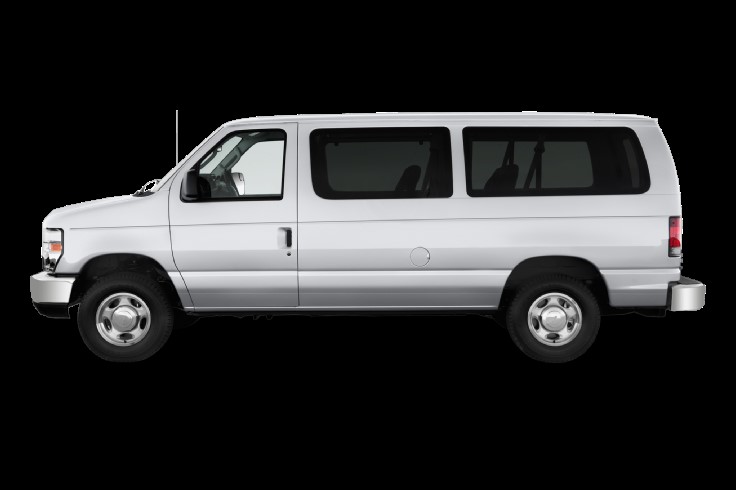11.23.14 Day 3 with Carlos Donjuan
This week, Carlos began class with a presentation in the lecture room. The focus of his talk was the work of his collective, SOUR GRAPES. Over the last couple of years, Carlos and the SOUR GRAPES crew have been awarded the opportunity to paint several large-scale public murals in and around the Dallas/Fort Worth area.


Carlos walked the students through the process from beginning to end. He spoke in detail about writing up proposals, creating well-rendered plans and preparatory drawings, working out a budget, and managing the group dynamics of an artist team. He stressed the importance of researching the cost and amount of material needed, as well as the amount of labor that will be involved in any project. Carlos explained that an artist or artist team needs to be well informed about all the details of their project before it begins.

Carlos shared a few highlights, as well as a few of his recent challenges, when working large scale for a municipality. Though Carlos finds fulfillment in his own solo studio practice, his collaboration with SOUR GRAPES and his public projects that involve working with the local government, architects, engineers, and construction workers are exciting in that they really push him to creatively problem solve. On top of that, Carlos revels in the fact that his artwork is a part of the community and available for anyone and everyone to enjoy.
After a few questions from the students, the class headed back to the studio. This week, students were asked to bring found objects from home. These found objects had no requirements other than not being purchased. The teens were not told in advance how the objects would be used. In the studio, they were divided into groups of three. Each group was assigned to create some sort of cohesive sculptural work. Carlos was interested in having the teens function as small artist groups and navigate what it means to creatively collaborate.

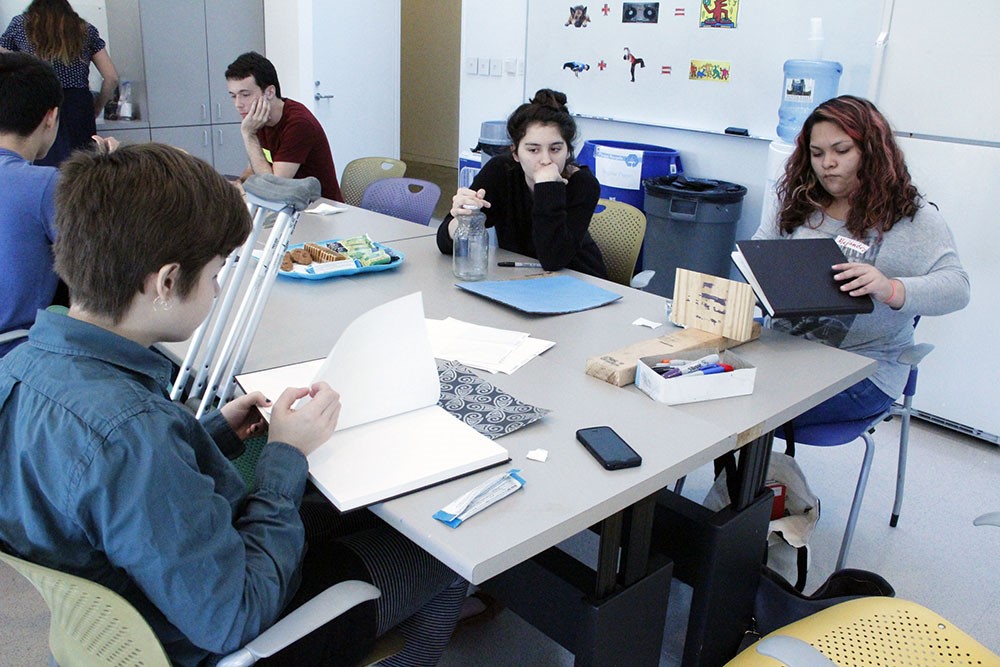

Each group gathered together to look at what one another brought, then brainstorm and sketch out some ideas for their work. It took some groups a little longer to figure out what they wanted to create, but once everyone did, the room erupted in conversation as each team worked intently on their pieces.
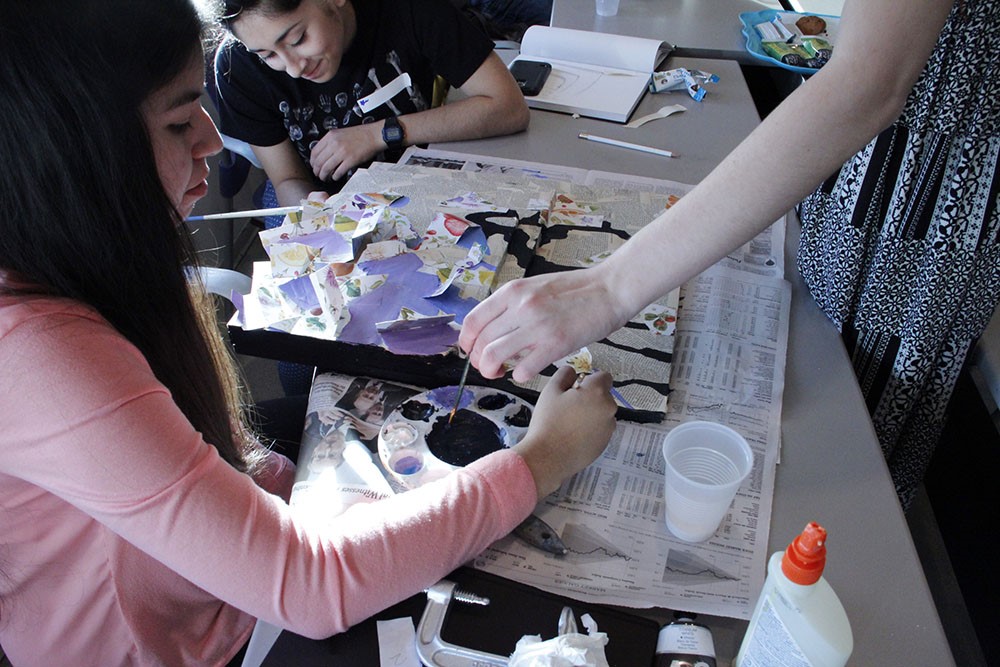
Students worked with a variety of materials such as paper, tree stumps, wood blocks, cardboard, bottles, origami paper, wire, linoleum tiles, and even an animal skull.
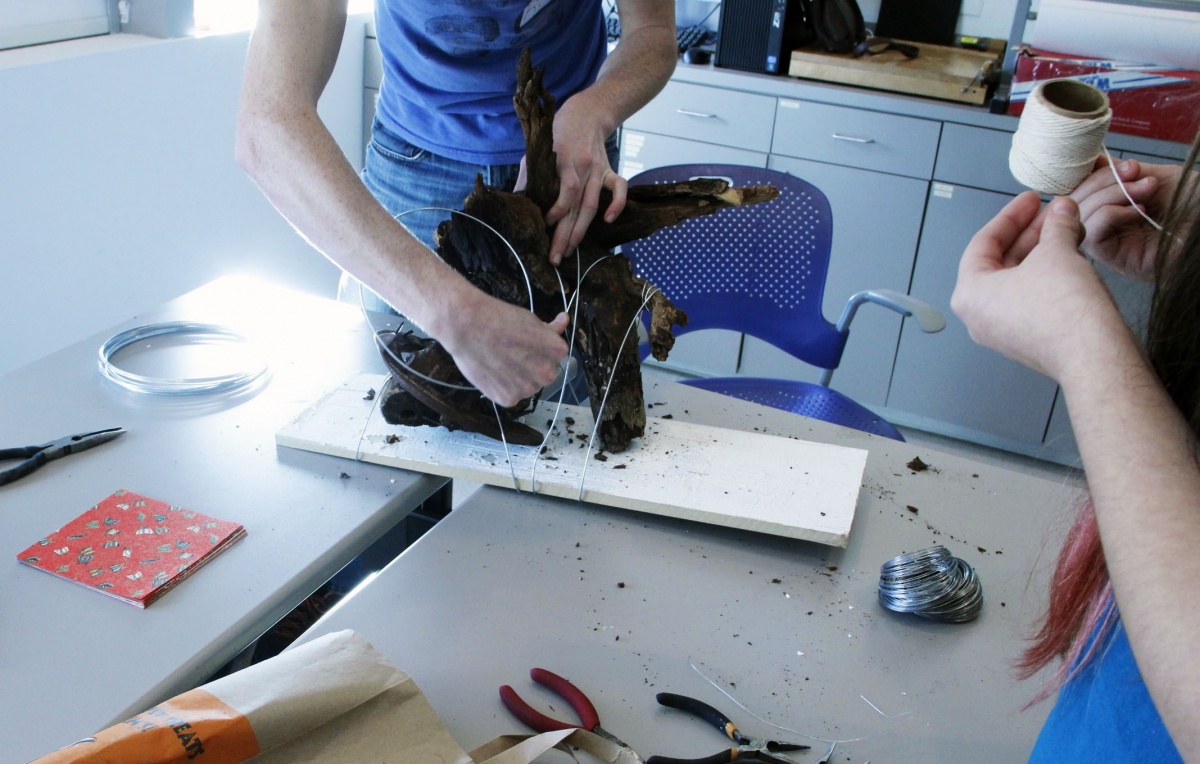

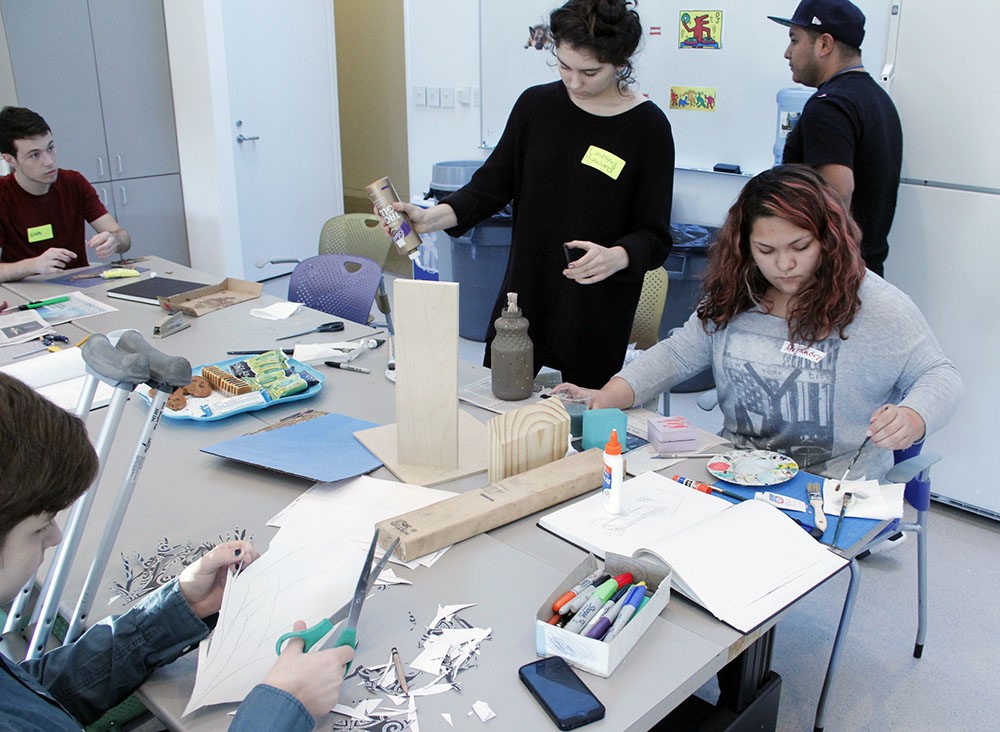
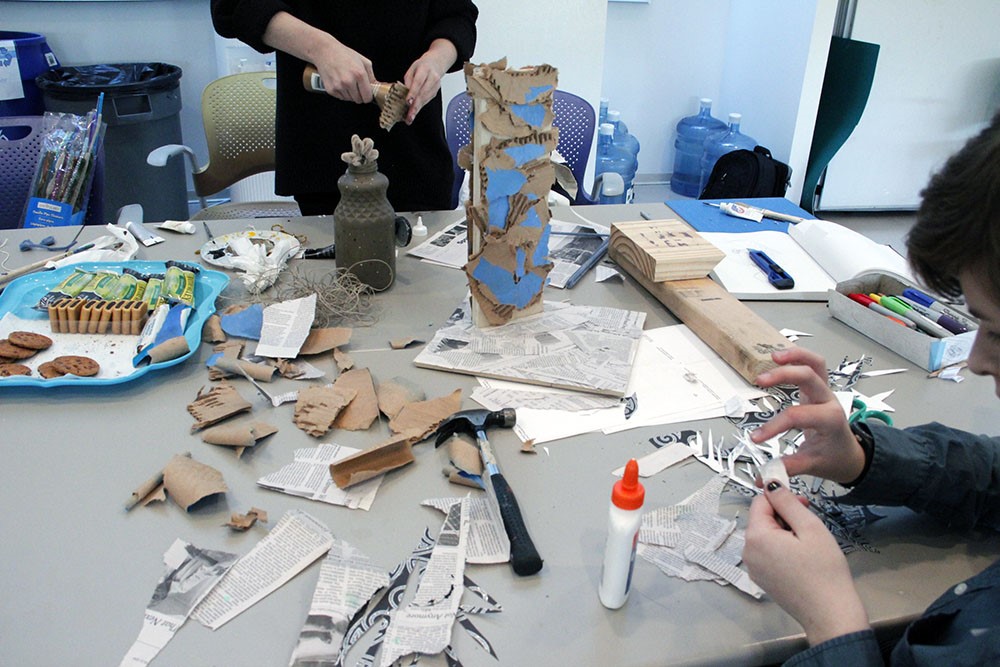


To attach the elements, they used glue, wire, nails, screws, and whatever worked best to adhere everything as securely as possible. Paint, marker, and collage techniques were used to embellish the works. Everyone was focused and worked right up to the designated time.



During the last 10 minutes of class, we discussed the outcome of each of the collaborative works and then talked about our next project: collaboratively painting a van. Carlos went to the white board to list general ideas and themes. We discussed what was appropriate and inappropriate, as well as basic design and color ideas. Each student was given a print of a van and their homework was to come up with a design and color palette.
